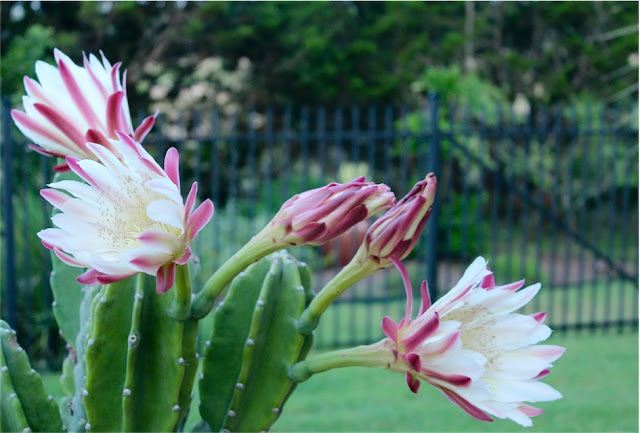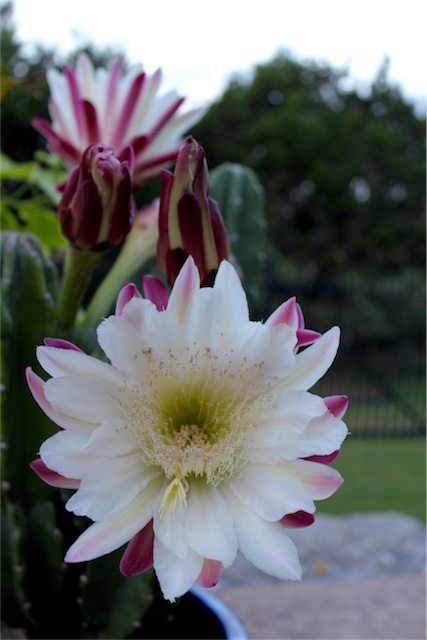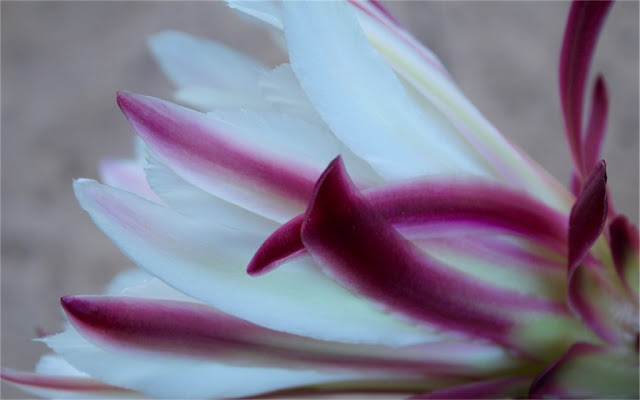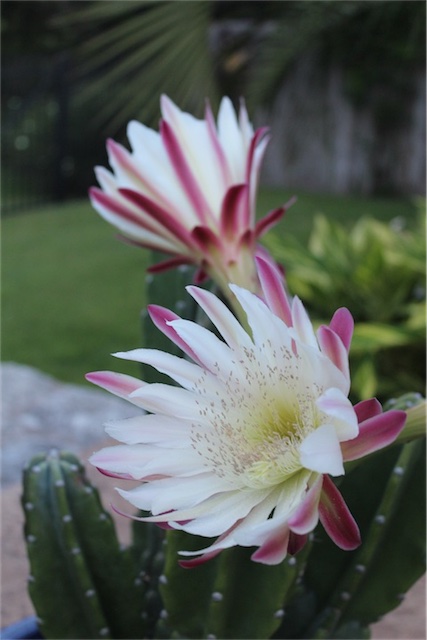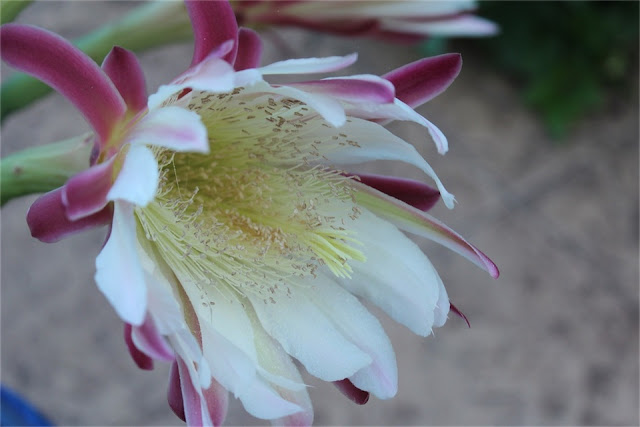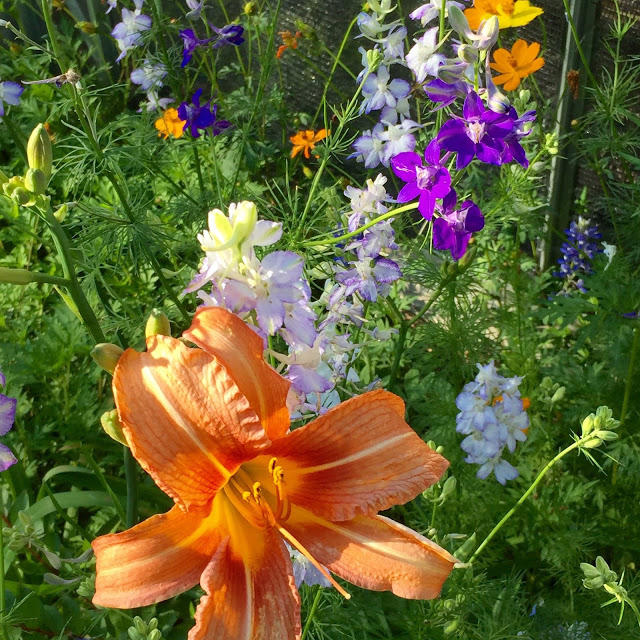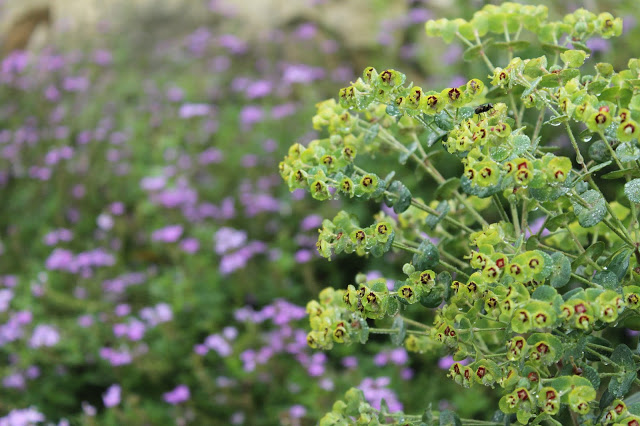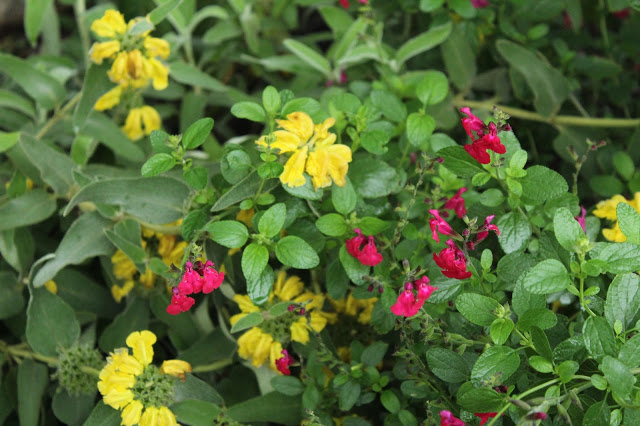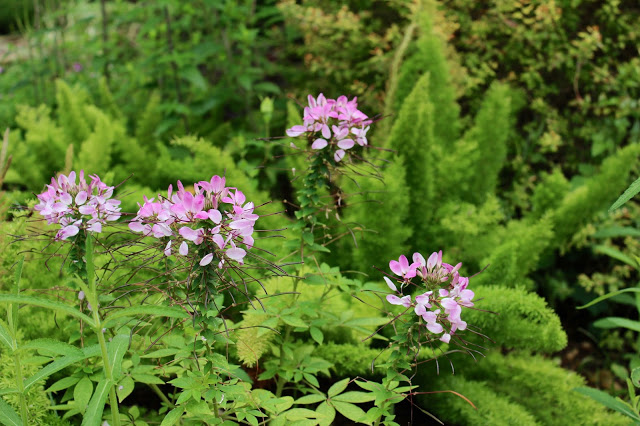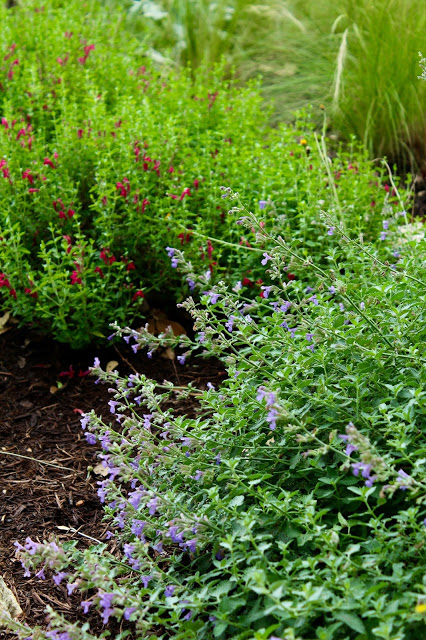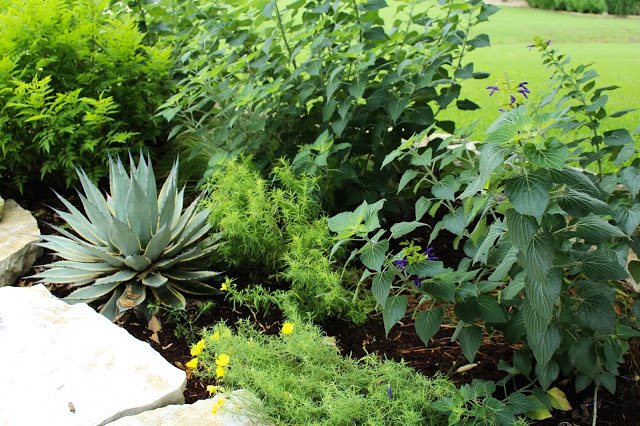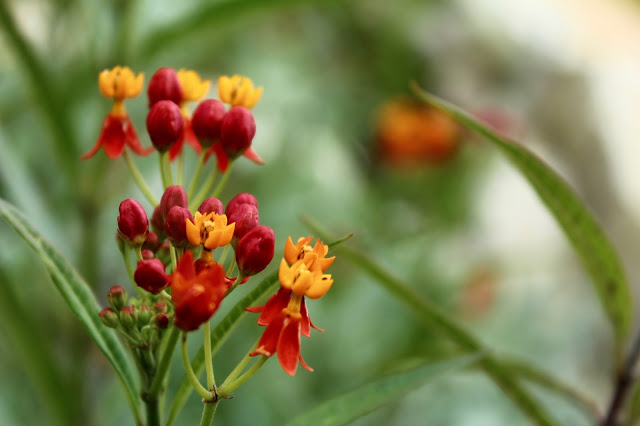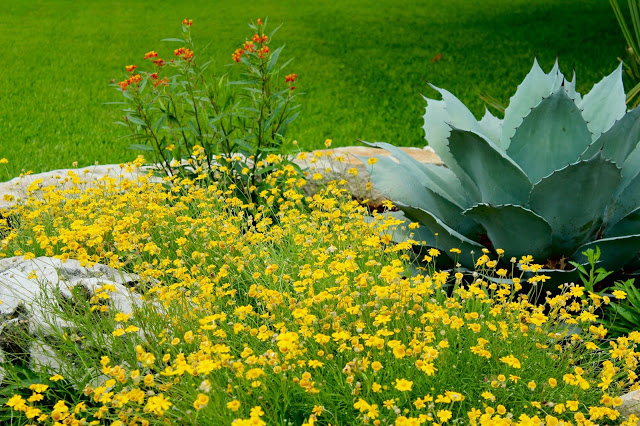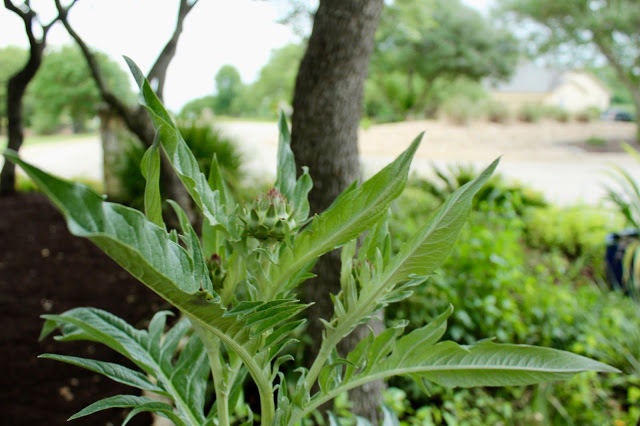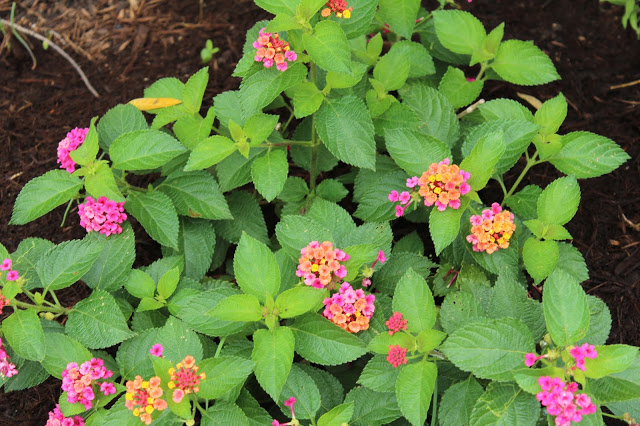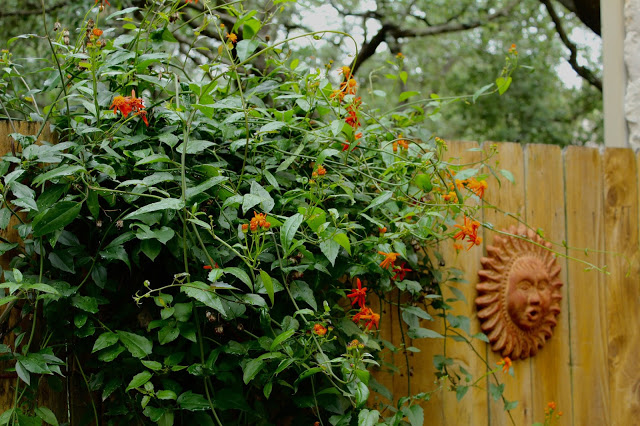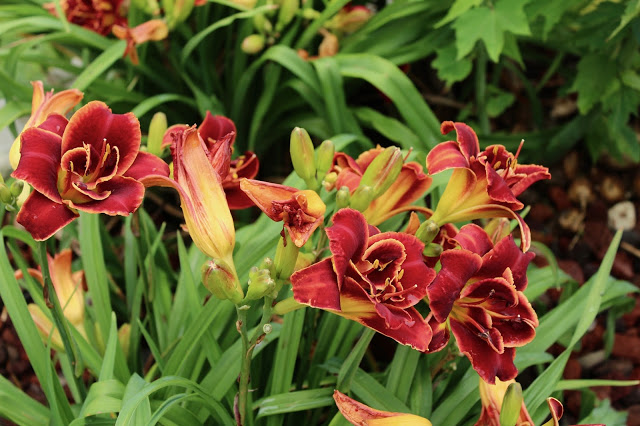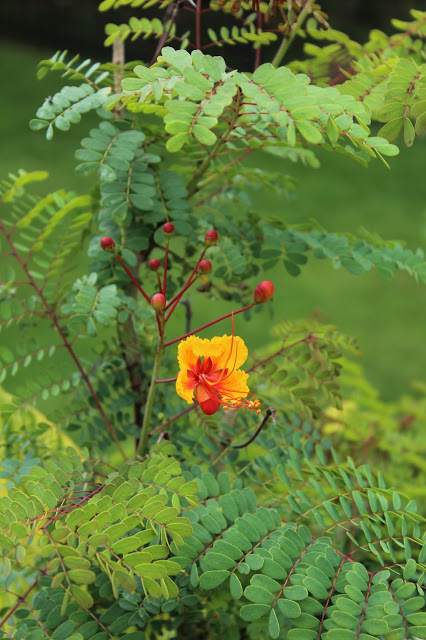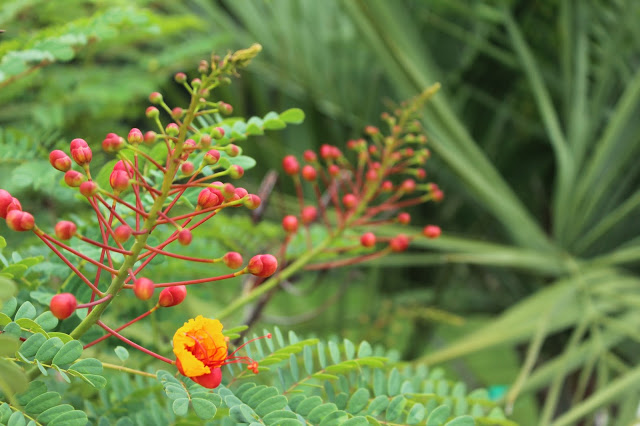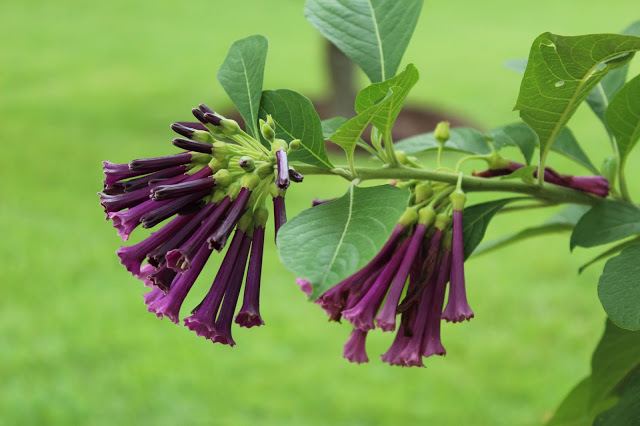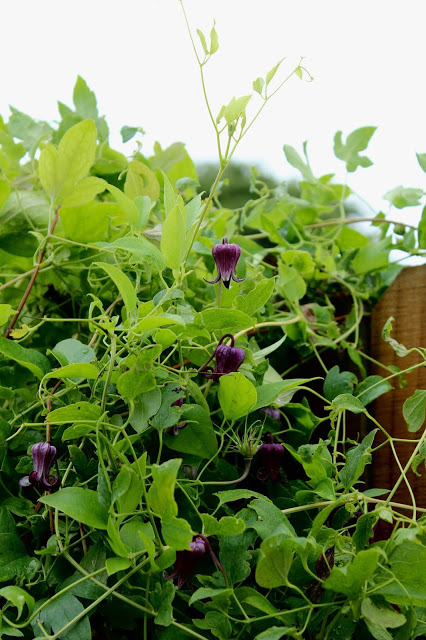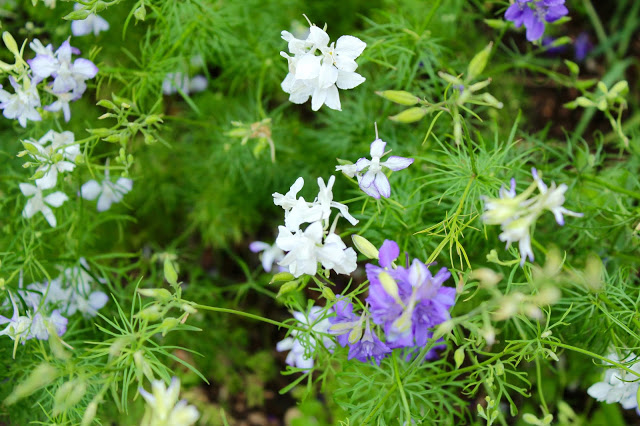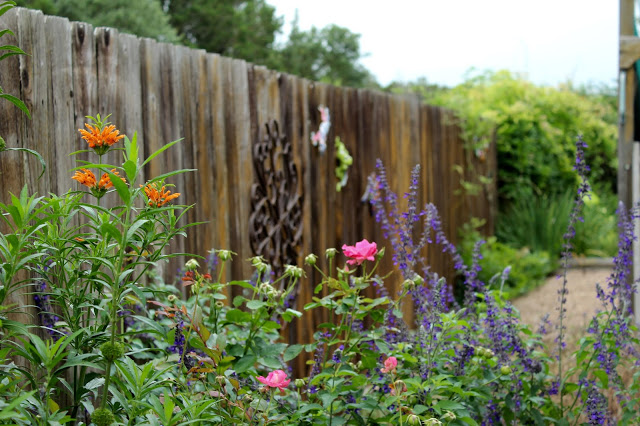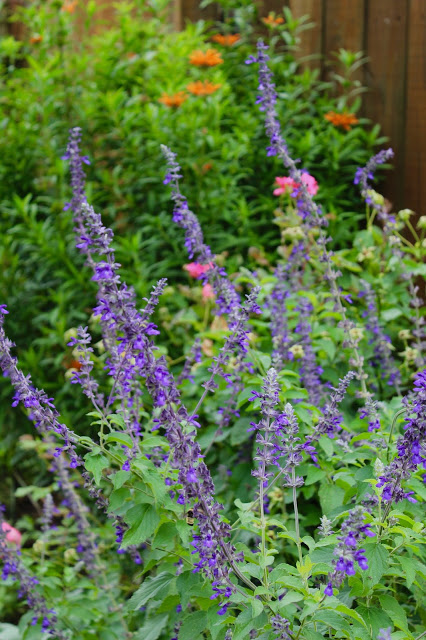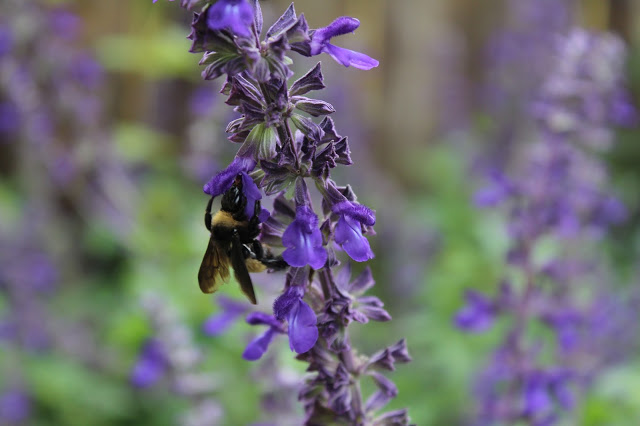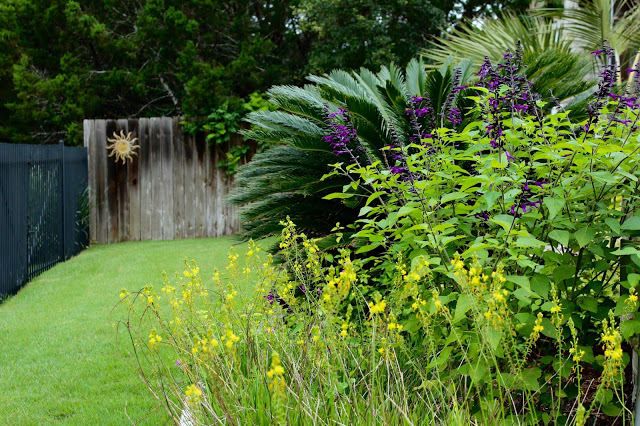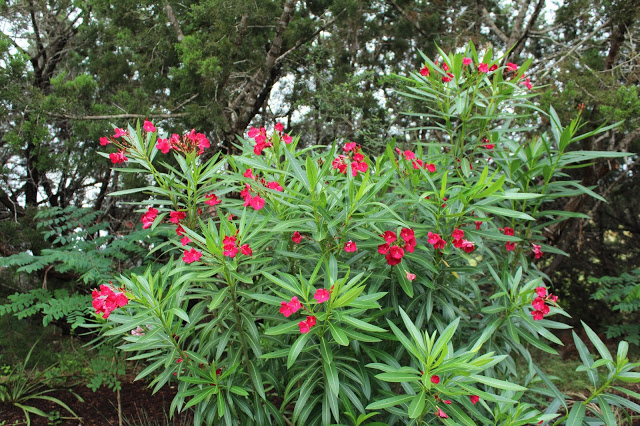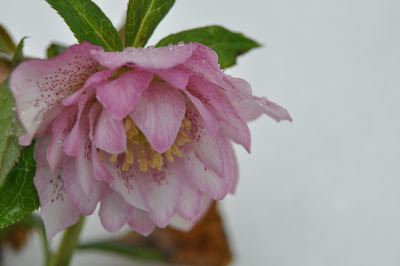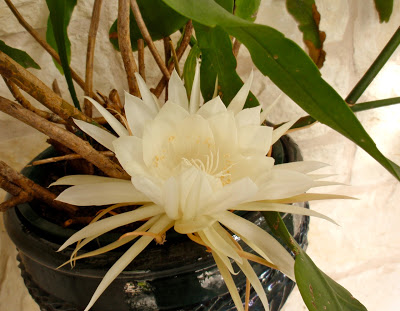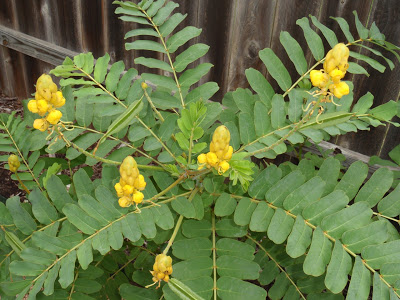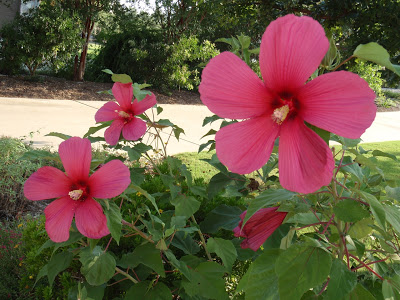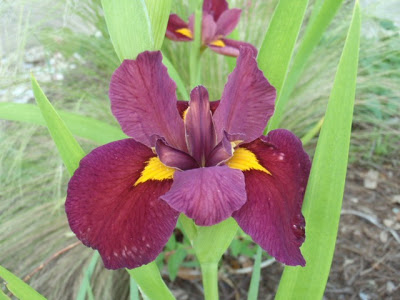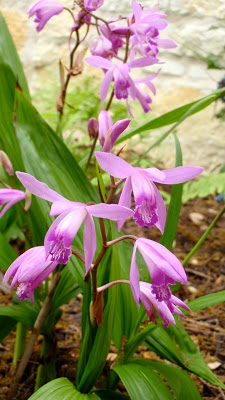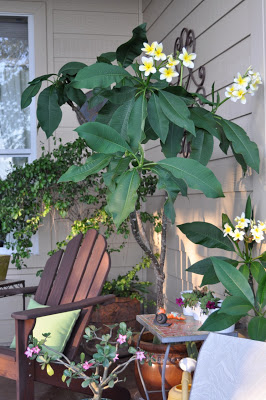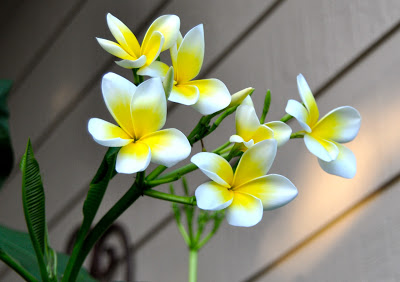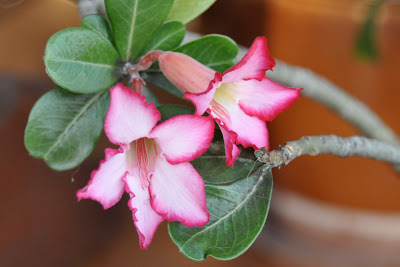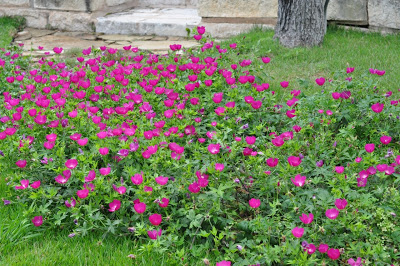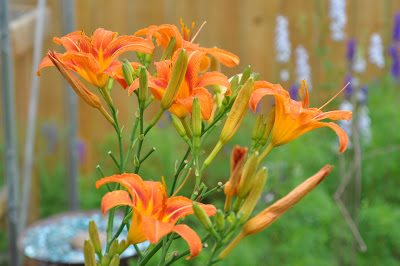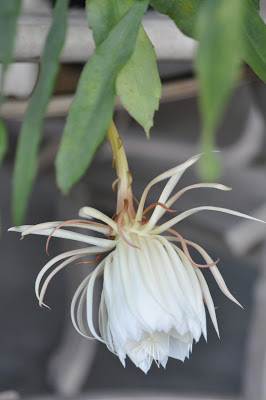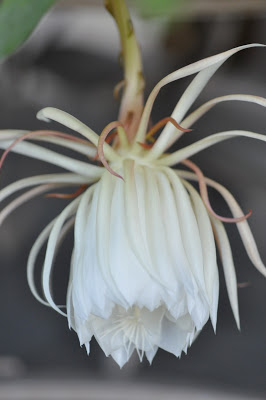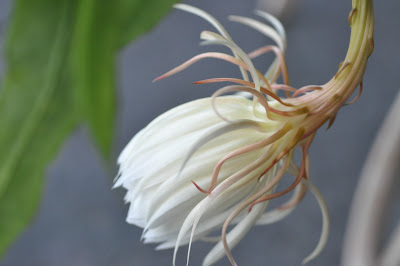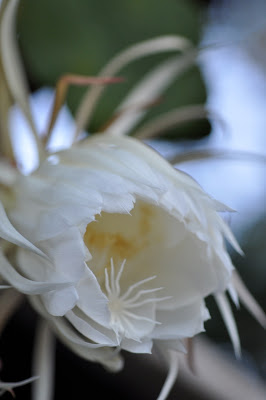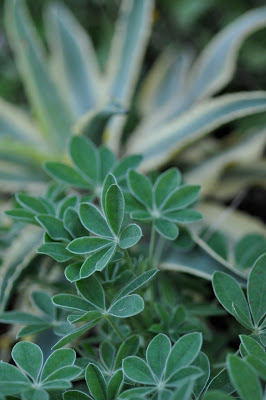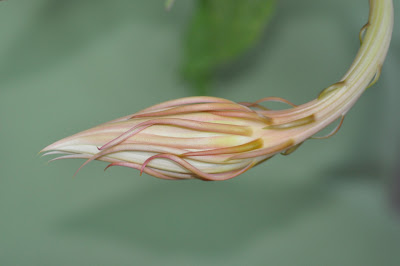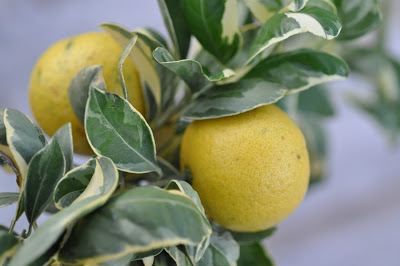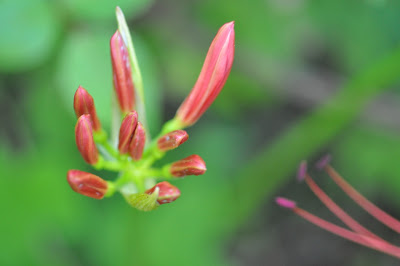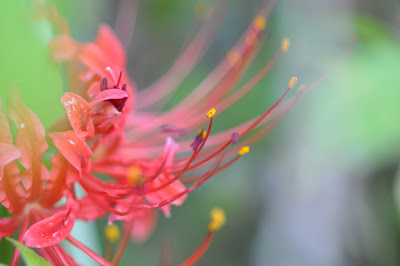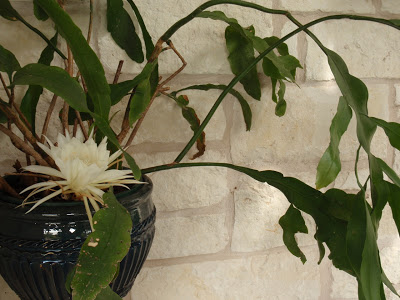Beautiful exotic blooms welcome me home…
Back from a magical 6-day garden trip that covered Winterthur, Longwood, and Chanticleer gardens, visions of blooms danced in my head last night.
It’s always a little hard to come back to your own garden after seeing the grandeur of such vast and amazing gardens. Lucikly, I was greeted with stunning blooms on my Peruvian cereus this morning. Cereus repandus (formerly Cereus peruvianus) is a thorny cactus with a sculptural shape that blooms in spring-summer.
It’s native to the rocky outcroppings and savannas of South America. In the wild, it can grow up to 30 feet tall, but is well contained in pots (thank goodness).
I had two blooms last year, and only one the year before that after I bought it. Its showy blooms are normally followed by red fruit much like dragon fruit, though more round. We ate dragon fruit every day when we were in Thailand 3 years ago.
Sadly, I haven’t had any fruit develop after the flowers yet. Last year, we had heavy rains during the bloom and they simply fell off when they were done. There is no rain in the forecast for this week, if we do get some soon, you can be sure I will be bringing it under cover. I’m eager to try the fruit.
It goes into the greenhouse for the winter, because it’s only hardy in zones 9-11. This year, it would have been fine outside, since I never had a freeze, but I’m not taking any chances!
I shot these photos early this morning, just as the sun was beginning to shine and the blooms were still at their peak.
I’ll have to enjoy my photos for the rest of the day, however, as the blooms have already closed up and are starting to shrivel. They are one-night bloomers. I’m so glad I was home to see them – if we’d come back one day later, I would have missed these 3 beautiful blooms. Now I have two more to look forward to.
It’s great to be back home in my garden.

